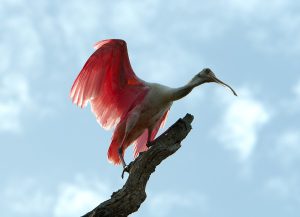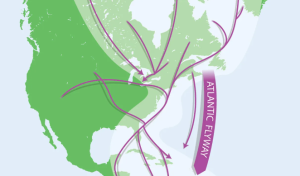The bird, bird, bird, the bird is the word! This might be a hook line in a reasonably famous 1997 Timbaland & Magoo song, but it also rings true in Florida.
Our state hosts a myriad of ecosystems that are home to numerous bird species. Overall, weather conditions in Florida allow for year-round bird-watching opportunities, with easily a half dozen businesses specializing in these types of ecotours.
Our state bird, the mockingbird, can be found in a variety of habitats, including urban areas, dense thickets, and agricultural areas. The mockingbird is known for its signing voice, and the ability to mimic the sounds of more than 30 species of birds. They “sing” to defend their feeding areas.

Other notable species include the ibis, anhingas, wood storks, and members of the heron family. All of these species can be easily found here in south Florida. The following three groups are commonly found in coastal areas:
- Marsh birds-live in or around marshes and swamps. They include herons, storks, flamingoes, limpkins, brown pelicans, and rails.
- Shorebirds-found in beaches and wetlands. They usually have unremarkable coloration, long legs, bills, and toes.
- Wading birds-wade in shallow water to forage for food, do not swim or dive. Include herons, egrets, spoonbills, and more. Their long legs and long bills are adaptations for catching food under the surface.
Some of these species fall into more than one category, so you may hear one species referred to as a “marsh bird” or “shorebird,” depending on whom you speak with.
Bird migration

The Atlantic Flyway refers to a bird migration pattern that follows the east coast of the United States and up to Canada. As we learned as young tots, birds fly south in the winter. This is true in the case of the Atlantic Flyway: during the Fall, birds migrate south towards warmer temperatures and in the Spring, return north to breed. Florida is very strategically located in the Flyway, and many birds stop to rest here during their travels. As such, consistent bird watching opportunities abound. According to the Audubon Society, more than 500 species of birds utilize the Atlantic Flyway, a pretty incredible phenomenon.
If you like birding, check out eBird, an online database run by Cornell University. Not only can you catalog all of the species that you’ve encountered, but it also serves as a terrific learning instrument.
To go birding in the southeast Florida area, you can visit:
Miami-Dade County:
- Crandon Park
- AD Barnes Park
- Bill Baggs Cape Florida State Park
- Biscayne National Park
- Everglades National Park
Monroe County:
- John Pennekamp State Park
- Bahia Honda State Park
- Dry Tortugas National Park
This is by no means a comprehensive list, so be sure to do some digging for other ideas and locations. In Miami-Dade County, the Tropical Audubon Society offers birding field trips.
Grab your binoculars and go birdwatching. Happy National Bird Day!
 1
1
